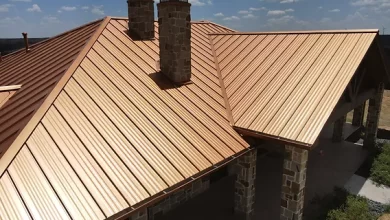Installing Gyprock plasterboard, more commonly called drywall, onto your ceiling might sound daunting. However, it is very much doable by any competent DIY person.
The step-by-step guide will help walk you through renovations and new projects in a way that is easy to understand and follow.
Step 1: Prepare the Ceiling Frame
Before you can begin attaching the plasterboard, this ceiling frame has to be properly prepared. Here’s how you get it ready:
1. Check Spacing
Check that the wooden beams, consisting of studs and joists, are spaced not more than 600 mm apart. This spacing is important because it ensures the plasterboard will have adequate support and will not sag over time.
2. Align the Frame
Using a straight edge—like a long, flat piece of wood or a level—check that the studs, noggings, and joists are all in line with each other; plane down any projecting parts or add packing if parts are below the line. This is so that the surface to be plasterboarded is as flat and even as possible.
3. Prepare the Surface
The nails or screws that stick out of the surface of the area should be removed and the surface made clean, dry and free of dust, paints or grease. This will enhance the action ofthe adhesive when sticking the plasterboard onto the surface.
Step 2: Fixing the Gyprock Plasterboard to the Ceiling
Once your frame is ready, you are ready to attach the plasterboard. Follow these steps to ensure a solid and smooth finish:
1. Apply Adhesive
Apply Gyprock Stud Adhesive to the ceiling joists, starting about 200mm from where the edge of the plasterboard will be, applying small blobs, about the size of a walnut, every 200 to 230mm along the joist. Simply leave a 200mm gap from each end of the plasterboard without adhesive.
This will give space for the fitting of the boards together later.
2. Position the Plasterboard
Lift the first sheet of plasterboard and position it at right angles to the ceiling joists. You will require your helper to hold the board in place while you fix it into position to the joists.
3. Fix the Plasterboard
First, nail or screw the plasterboard to the joists along one edge. The nails or screws should be spaced at about 10 to 16mm from the edge of the plasterboard; just drive them in enough to sit slightly below the surface without breaking the paper on the face of the board.
This will hold the plasterboard firmly in position without any damage.
4. Press and Fix
After the first edge is fixed, firmly press the plasterboard against the adhesive and fix the opposite edge in the same manner. This helps in spreading the adhesive uniformly and forms a strong bond of the plasterboard to the joists.
5. Fasten the Center
Next, lag the plasterboard to the centre of each joist. Do this with two nails spaced 75mm apart or with one screw at each point.
This will hold the plasterboard flat to the ceiling and stop it from sagging in the middle.
6. Fasten the Ends
At the ends of the plasterboard, where it meets the wall, these should be nailed or screwed at 300mm spacings if a cornice is to be used. If you prefer a square set ceiling, where the plasterboard meets the wall without any trim, then you will want to use nails or screws at 150mm spacings for extra security.
Step 3: Line Up and Finish
Now that the first sheet is in place, you can move on to the next:
1. Align the Next Sheet
Place the next plasterboard sheet so that the recessed edges—treated thinner edges designed to join together—are tightly butted to each other with no gaps showing through. This is important so that when you tape and plaster the joints at a later stage, you end up with a smooth, even surface.
2. Continue Installing
Repeat the sequence of applying adhesive, positioning the plasterboard, and securing it using nails or screws until the whole ceiling area is complete.
3. Measure and Cut the Final Sheet
When you are at the last section to be covered on the ceiling, take accurate measurements and then cut the plasterboard to size. Position the cut edge of the plasterboard always against the wall where it will be least visible and easiest to cover with trims or plasters.
4. Check for Stability
Once all the plasterboard is in place, check that everything is securely fastened and the joints are tight. For ceilings with more than three recessed joints, or where two pieces of plasterboard meet between joists, back-blocking – adding extra support behind the joints – can be used to add strength.
Additional Tips
- Safety First: Always use your safety goggles and dust mask to keep your eyes and lungs clear of dust during plasterboard cutting.
- Get Help: Plasterboard sheets are pretty heavy and hard to hold, so get some help with the lifting and positioning of them.
- Professional Help:In case you do not trust your DIY skills or if the design of your ceiling is somewhat complex, don’t be afraid to seek the services of a professional. This also involves the ceiling and wall installation services Perth Ceiling and Walls Extends to ensure your ceilings are complete and accomplished just right.
Installation of Gyprock plasterboard to your ceiling is quite within the grip of most DIY enthusiasts if you allow adequate time for preparation and follow these steps carefully. With enough patience and attention to detail, you will be able to get a smooth finish, like a pro, which enhances the appearance of any room.
If in doubt, seek professional advice. For long-term benefits, getting ceiling repair Perth with Perth Ceiling and Walls will spare you a lot of time and effort to ensure that your ceiling looks the best and lasts for many years.
Need help with your ceiling? Consult them now for professional advice and services to make your ceiling job go right!





